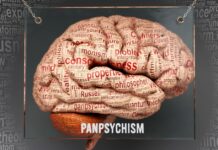Homeopaths use a model called “miasms”. [Original: An unhealthy vapor or atmosphere; a miasma]
Miasms are one of the most powerful influences in health and disease I know, yet the least acknowledged or understood. The word was introduced by Samuel Hahnemann, founder of homeopathy. Basically a miasm in this context means a shadow or disease ‘imprint’ which is inherited down the generations.
All observant doctors are aware that disease and disturbance tend to run in families, and can be likened to a kind of family blight. This is not to mean a specific replicated genetic disorder carried by the genes such as, for example, hemophilia or Freidrich’s ataxia. The sickliness can manifest itself in many different ways, each individual suffering differently from the others in his or her family tree but all bound by the commonality of being a somewhat weakened or unhealthy bunch.
Courtesy of Resonance School of Homeopathy (https://www.resonanceschoolofhomeopathy.com)
To Hahnemann, a miasm was something more in the nature of a primitive illness, a throwback, rather than inherited. He named three in particular: Syphilis (or Luesinum), Sycosis, and Psora. Briefly, Syphilis has ulcerating tendencies; Sycosis (meaning from gonorrhea) is congestive, leading to deposits and tumor formation; while Psora is a protean disturbance which relates to functional imbalances of all kinds.
Psora is said to have formed in the time of the Plague (the Black Death) and Hahnemann considered it the Big Daddy of miasms.
New Miasms
We may be forming new miasms all the time. Antoine Nebel and Henry C. Allen added Tuberculinum, which many practitioners now regard as the pre-eminent miasm, presumably since it is but one generation removed from today’s population (and it’s coming back). Among the fall-out diseases from this inherited toxin one can list asthma, eczema, hay fever, food allergies, chronic sinusitis, migraines, mental illness of various kinds, irritable bowel, colitis, heart trouble, diabetes, Hodgkin’s disease and even leukemia.
Leon Vannier added a fifth miasm, which is the Oncotic (cancer) miasm. It is characterized by changes in body odor, warts, excrescences, sores that refuse to heal and a sallow skin, somewhat like that of malignant cachexia. I’m not so comfortable with that one.
It is also fashionable to consider the emergence of at least two new miasms: Candida and Chemical Sensitivity; Sugar Glut, I think, may also very likely become yet another “modern” miasm.
The Candida miasm is best called “Mold”. I introduced the term ‘moldy patient’ in my book The Allergy Handbook and there is a definite type of individual. Mold seems to me a far bigger issue than just Candida; the patient becomes sensitized to a wide variety of molds and yeasts, damp conditions and chemical hypersensitivity. Unquestionably the condition is brought about by overuse of antibiotics, made worse by our obsession for refined carbohydrate and sugar, which results in a great deal of unnatural fermentable matter in the gut.
Casebook: Male, 10 Years
From the age of three the patient suffered from repeated vexatious sore throats and ear trouble. He fell steadily behind other children his age in scholastic performance. His tonsils and adenoids had been removed (no improvement) and finally his parents were told by an ENT (ear nose and throat) surgeon that the trouble was caused by allergies and the boy would suffer from this all his life.
Analysis showed that the predominant stressor was TB miasm and an acquired measles toxin. The indicated miasm and measles nosode were started and continued at appropriate repeat intervals over several months.
The ear and throat condition cleared up rapidly and has never reappeared. The boy’s mental and physical slowness, which had been such a worry to his parents and teachers, soon abated and he was able to hold his own with his peers.
The Studious Monk
Former head of a monastic order, Simon Goodrich, now an alternative practitioner in Oxford, has worked extensively on historic miasms. Simon has identified a number of obscure miasmata and post-infective dyscrasias, along with recommended treatments, which I find most helpful (dyscrasia is a general term for a body disorder, which derives from the old theory of mixed “humors”: Greek krasis, mixture, hence bad mixture).
Simon has shared with me a list of the fifteen predispositions, with an historical estimation as to when the particular strain of this condition was prevalent, and in which society, follows here:
Goodrich’s List of Historic Miasmata (reverse order)
15) Cytomegalo-virus: Spread via cotton trade from USA; Emergence in approximately 1900. Tolerance acquired around 1990.
14) Tuberculinum Kent. (Tuberculosis): Spread through shipping routes in British Empire; Emergence in approximately 1650. Immunity acquired from around 1800.
13) Baryata Acet. (gonorrhea): Spread through silk trade with Iranian civilization (Arabia); Emergence in approximately l600. Immunity acquired around 1750.
12) Endorid (cholera): Spread through spice trade from Ceylon, the Ceylonese civilization; Emergence in approximately l500. Immunity acquired around 1650.
11) Arsen. Sulph. Rub. (Syphilis): Spread through the jute trade with Bangladesh, The Mughal Empire; Emergence in approximately 1500. Immunity acquired around 1650.
10) Lycopus Eur. (The Black Death): Spread through the fur trade with Turkestan, The Ottoman Empire; Emergence in approximately 1400. Immunity acquired around 1600.
9) Cobaltum Nit. (The Plague): Spread through the porcelain trade with Ming China; Emergence in approximately 1200. Immunity acquired around 1400.
8) Aesclepias Inc. (pneumonia): Originated in Europe, and prevalent within the Frankish Empire; Emergence in approximately 600. Immunity acquired around 750.
7) Droleptan (typhoid): Originated in Babylonian Empire; Emergence in approximately 900 BC. Immunity acquired around 800 BC.
6) Apium Grav. (fungal infections): Originated in Egyptian Empire; Emergence in approximately 1200 BC. Immunity acquired around 1100 BC.
5) Urinum (leprosy): Originated in Hebrew society; Emergence in approximately 1400 BC. Immunity acquired around 1300 BC.
4) Cornus Flor. (impetigo or scall): originated in Canaanite society; Emergence in approximately 2200 BC. Immunity acquired around 2000 BC.
3) Pectinum (uteritis, inflammation of the womb): Originated in Phoenician civilization; Emergence in approximately 2600 BC. Immunity acquired around 2400 BC.
2) Ornithogalum (meningitis, cerebral palsy): Originated in Sumerian civilization; Emergence in approximately 3200 BC. Immunity acquired around 3000 BC.
1) Cuprum Met (genital herpes): era unknown
Goodrich’s suggested remedy is shown with each condition. OK, obscure stuff but I find this work most fascinating!
Impetigo or scall. A golden-colored infective rash from Staph aureus (aureus = gold)
The point to keep in mind is that this is a whole different vector of disease. It’s not caused by anything current, like pathogens, nutrition or genes. A miasm is a vaporous and shadowy impression that nevertheless has a profound effect on health.
Along with Simon, I hold that we each carry a number of miasms and this impacts our very survival. The body’s energies can become locked up in fighting the miasms, with adverse consequences for long-term health.
So, with four miasms present, the individual is unlikely to survive long (succumbs in infancy to childhood illnesses or teen disasters, such as acute leukemia); a person with three miasms will make it to adult life but die early (heart attack at 40-50 for men, breast cancer same age range for women); with two miasms, that’s good for survival to 60-70 years; the lucky person with only one miasm should make it through to 70-80 and beyond.
All this, unless you are lucky enough to meet a skilled homeopath or good electro-acupuncture specialist! Or you read my book Aging Without Growing Old. In which case you can live a LOT longer!
To your good health,
Prof. Keith Scott-Mumby
The Official Alternative Doctor




